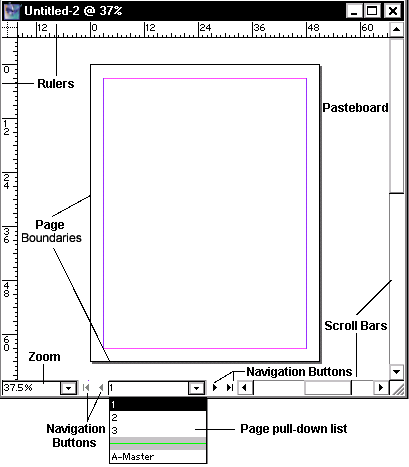
Now InDesign CS2 includes these features as part of its core functionality, just for PageMaker users:
#Indesign open pagemaker 6.5 license
Both the InDesign CS PageMaker Edition and the PageMaker Plug-in Pack were originally created to help PageMaker users more easily make the switch to InDesign (users could either license the PageMaker Edition, or, if they'd already licensed InDesign CS, they could add on the PageMaker Plug-in Pack to make it match PageMaker Edition). It’s a good deal for $49.Adobe InDesign PageMaker Edition and Adobe PageMaker Plug in Pack?Īcobe has incorporated all of the functionality first introduced in Adobe InDesign CS PageMaker Edition and the PageMaker Plug-in pack into InDesign CS2, so these separate products are no longer necessary. It adds long-established PageMaker automated-bullet and -numbering tools, as well as options that simplify access to InDesign’s various functions.

PageMaker Plug-in Pack will prove useful to many InDesign users.

But you’ll still need to use InDesign’s Selection and Direct Selection tools since the Position tool doesn’t completely replace them.įinally, Plug-in Pack lets you import PageMaker 6.0 files, in addition to the PageMaker 6.5 and 7 formats that the standard edition of InDesign supports. The other is the Position tool it selects an object’s container or content contextually, instead of forcing you to pick the correct tool, as you would with InDesign. This adds yet another palette to InDesign CS’s cluttered interface, but it’s worth it.
#Indesign open pagemaker 6.5 windows
One is a handy toolbar taken from the Windows version of PageMaker 7 that gives you one-click access to common functions such as opening a file or inserting pages. Plug-in Pack also adds two interface features. In addition, Plug-in Pack comes with templates and a template viewer. It’s easy and can even adjust each page’s layout automatically to allow for creep - a phenomenon that occurs when material on the outside pages creeps into the fold due to the thickness of the folded pages. The plug-in arranges the pages in the correct order for printing - double-sided and ready for folding. Plug-in Pack also includes a lowly apprentice production’s InBooklet SE tool to create folded brochures.

That means you can’t insert or remove words condition-ally (say, to create a form letter addressed to both individuals and couples). This process is similar to using Microsoft Word’s Mail Merge feature, except that Data Merge has no way to set up conditions for variable-text handling.

Just set up a comma-delimited or tab-delimited text file with your data (text and/or links to images), and import the data into InDesign. The most useful plug-in of the pack is Data Merge, which lets you create documents featuring variable text, form letters, catalogs, and business cards. Though it’s marketed as a transition aid for PageMaker users, the pack isn’t a bridge from PageMaker rather, it’s a collection of PageMaker tools that InDesign should have featured in the first place, along with some InDesign interface enhancements. PageMaker lives on, sort of, via the new PageMaker Plug-in Pack that adds to InDesign CS eight PageMaker modules, three of which are from version 7. Even with the new InDesign CS, Adobe is not quite ready to let go. InDesign long ago overtook PageMaker as Adobe’s publishing flagship, but the company has let the OS 9–only PageMaker 7 languish on life support.


 0 kommentar(er)
0 kommentar(er)
